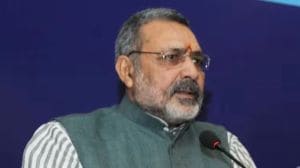The Tawang test
By restricting demonstrations in Arunachal, what does India say about its democracy?

Beijing has of late become strikingly covetous of Arunachal Pradesh, and has shown itself to be so in diverse ways. Just ahead of Chinese President Hu Jintao’s visit to India in late 2006, the Chinese envoy in New Delhi controversially laid claim to the state. Some time later, Beijing refused to give an Indian official a Chinese visa, saying he came from a territory that was part of China. And this February, after Prime Minister Manmohan Singh visited the state and announced a special development package, Beijing lodged a diplomatic protest. Taken together, our northern neighbour’s attitude has been remarkably provocative, and is cause for worry since it is retracting from guiding principles agreed upon in 2005 on how to sort out border disputes.
Against this background, it was the content of the prime minister’s package that gave India an enlightened edge over Chinese provocation. He insisted that development is the key strategy for territorial defence, and the Rs 67,000 crore package signalled a welcome reversal of decades-old policies that essentially quarantined the state from the rest of India. It was understood, of course, that development as a strategy for meaningful integration would overlay the solid assurance of fundamental rights that India flaunts in a region otherwise noted for a deficit of democracy. This is why strong note needs to be taken of a protest by T.G. Rimpoche, a Congress MLA representing Lumla assembly in Tawang, the beating heart of the territory claimed by China. He regretted, in an interview in this newspaper, that the state government had curbed anti-China demonstrations. He worried about the message this conveys, adding, “India being the largest and most vibrant democracy should not try to gag its citizens’ voice.”
That is the kind of questioning sentiment that remains now that the Olympic torch has left Indian territory. It was nobody’s case that India be seen to be encouraging sedition or secession in Tibet. The questions that continue to trouble have, in fact, little to do with Tibet and China’s claim on it. They centre, instead, on what India said about its democratic principles by restricting peaceful demonstrations by its own citizens.





- 01
- 02
- 03
- 04
- 05


























